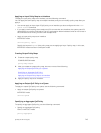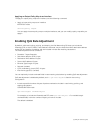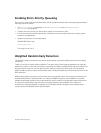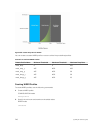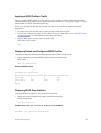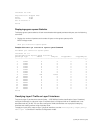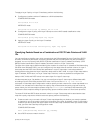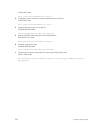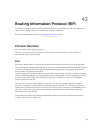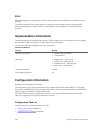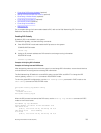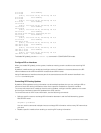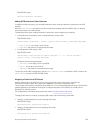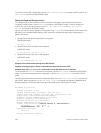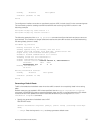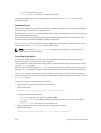
43
Routing Information Protocol (RIP)
The routing information protocol (RIP) is based on a distance-vector algorithm and tracks distances or
hop counts to nearby routers when establishing network connections.
RIP protocol standards are listed in the Standards Compliance chapter.
Protocol Overview
RIP is the oldest interior gateway protocol.
There are two versions of RIP: RIP version 1 (RIPv1) and RIP version 2 (RIPv2). These versions are
documented in RFCs 1058 and 2453.
RIPv1
RIPv1 learns where nodes in a network are located by automatically constructing a routing data table.
The routing table is established after RIP sends out one or more broadcast signals to all adjacent nodes in
a network. Hop counts of these signals are tracked and entered into the routing table, which defines
where nodes in the network are located.
The information that is used to update the routing table is sent as either a request or response message.
In RIPv1, automatic updates to the routing table are performed as either one-time requests or periodic
responses (every 30 seconds). RIP transports its responses or requests by means of user datagram
protocol (UDP) over port 520.
RIP must receive regular routing updates to maintain a correct routing table. Response messages
containing a router’s full routing table are transmitted every 30 seconds. If a router does not send an
update within a certain amount of time, the hop count to that route is changed to unreachable (a route
hop metric of 16 hops). Another timer sets the amount of time before the unreachable routes are
removed from the routing table.
This first RIP version does not support variable length subnet mask (VLSM) or classless inter-domain
routing (CIDR) and is not widely used.
Routing Information Protocol (RIP)
751



